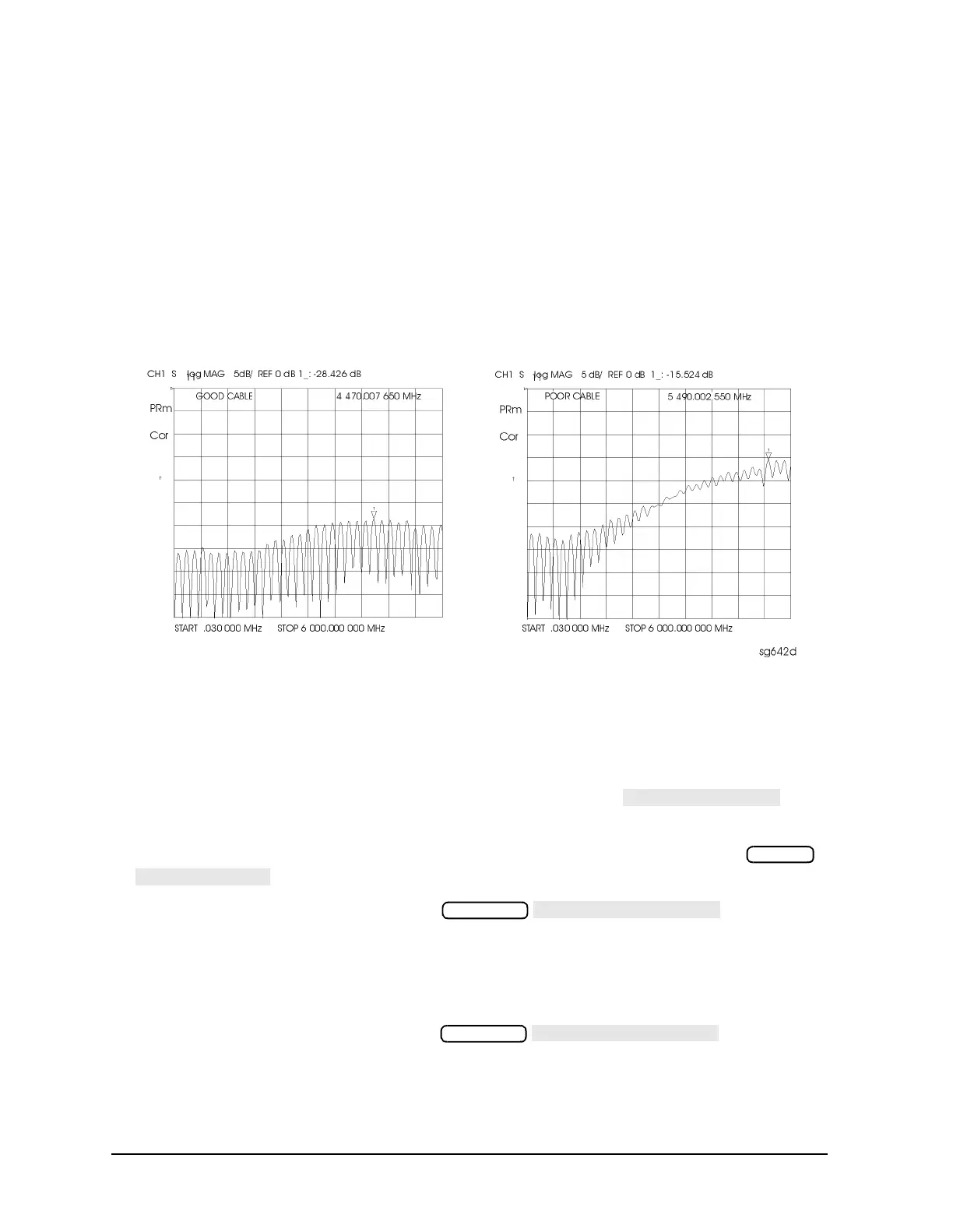9-6 Chapter 9
Accessories Troubleshooting
Inspect the Error Terms
Cable Test
The load match error term is a good indicator of cable problems. You can further verify a
faulty cable by measuring the reflection of the cable. Perform an S11 1-port calibration
directly at port 1 (no cables). Then connect the suspect cable to port 1 and terminate the
open end in 50 ohms.
Figure 9-1 shows the return loss trace of a good (left side) and faulty (right side) cable.
Note that the important characteristic of a cable trace is its level (the good cable trace is
much lower) not its regularity. Refer to the cable manual for return loss specifications.
Figure 9-1 Typical Return Loss Traces of Good and Poor Cables
Verify Shorts and Opens
Substitute a known good short and open of the same connector type and sex as the short
and open in question. If the devices are not from one of the standard calibration kits, refer
to your analyzer’s user’s guide for information on how to use the
function. Set aside the short and open that are causing the problem.
1. Perform an S11 1-port calibration using the good short and open. Then press
to view the devices in Smith chart format.
2. Connect the good short to port 1. Press and turn the
front panel knob to enter enough electrical delay so that the trace appears as a dot at
the left side of the circle. (See Figure 9-2a, left.)
Replace the good short with the questionable short at port 1. The trace of the
questionable short should appear very similar to the known good short.
3. Connect the good open to port 1. Press and turn the
front panel knob to enter enough electrical delay so that the trace appears as a dot at
the right side of the circle. (See Figure 9-2b, right.)
Format
Scale Ref
Scale Ref

